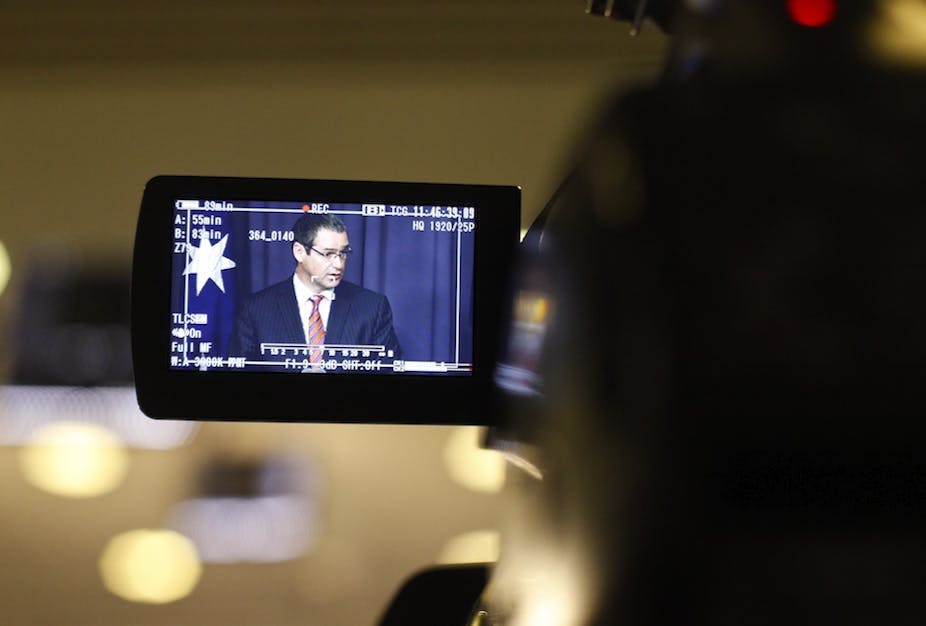The Federal Government’s Convergence Review has released its interim report, recommending the scrapping of existing cross-media ownership rules and that commercial operators be given “certainty” around the activities of the ABC and SBS.
The report, which says new digital media operators should face the same regulatory framework as traditional media outlets, suggests introducing a new “super-regulator”, local content quotas, and the use of a “public interest test” for media company takeovers.
Deakin University Associate Professor in Journalism Martin Hirst examines what the recommendations could mean for Australia’s rapidly changing media industry.
Do you think the report adequately responds to the challenges arising from media convergence?
I think it’s quite empty of content, to be perfectly honest. The headline in it for me is that it’s an attempt to come to terms with what I call the “techno-legal time gap” – the dissonance between what technology can do and how it is regulated.
It’s an effort to bring the regulatory regime up to speed with the technological advances in the media industry.
This is why the report emphasises platform neutrality, which is the idea that we should treat all communications technology pretty much the same way. There is no real argument anymore for maintaining any difference in the way that we regulate print and broadcast.
Convergence means the overlap between different types of media is huge, particularly online. We now see television and radio networks producing blogs and other forms of written copy. You can go to the ABC News website and read transcripts of stories from ABC radio current affairs program AM, and you can go onto a newspaper’s website and watch video content that they have made.
This is one of the key things the review was set up to look at.
Some of the proposals, such as setting up a new regulator, will take a lot of work. Is the political climate right for these changes?
The devil is really in the detail, and it’s difficult to tell just from this interim report where exactly the entire review will head.
One of the most crucial issues seems to be the time frame. We are now probably 18 months out from the next federal election, and it’s going to take much longer to get that sorted out. So it looks like the review has created a political football to be kicked around until the election comes.
The issue of setting up a replacement for the Australian Communications and Media Authority (ACMA) is quite complicated. Where does this leave the proposal put forward by head of the federal media inquiry, Ray Finkelstein QC to give more powers and money to the Press Council?
If you have one super-regulator that is at arm’s length from the government and deals with consumer complaints, then you don’t need a Press Council to deal specifically with print.
ACMA has done a good job in the past few years, particularly in reining in the worst excesses of the shock jocks. But the report is putting forward a light-touch approach to regulation here, and that is definitely what the industry wants.
The report talks about clarifying the charters of the ABC and SBS around their digital expansion. What are the implications of this?
There is a very important line in the report which is going to come back to haunt the ABC and SBS, but it is something that the Murdoch camp has been pushing for globally for some time. It says that the government must “give commercial operators certainty about the boundaries of public broadcaster activities”.
Over the past three or four years that have been various people in News Corporation, including Col Allan, John Hartigan, James Murdoch and Rupert Murdoch, attacking the ABC and BBC, saying that they’re getting in the way of commercial networks expanding.
If there is a move to put strong boundaries around the ABC and SBS, that will certainly work in favour of the commercial operators.
The review calls for a “public interest test” for media takeovers and mergers. Would this work in practice?
This relies on a flawed idea of how the market operates. If you look at the public interest test as it currently exists in the ACMA legislation, the Broadcast Services Act and at the Australian Consumer and Competition Commission, it is all about the invisible hand of the market.
What this does is set up people as consumers rather than citizens. It says that as long as we are satisfied as consumers – rather than as citizens – the public interest is being met.
The report acknowledges the concept of public interest is not very well defined.
Could the loosening of ownership rules lead to a wave of consolidation, or change the make-up of the media industry?
The elephant in the room here is what is happening to the Nine Network. No amount of tinkering with the diversity and ownership rules is going to deal with the fact that Nine is on its last legs.
In the next two to three months, it will fall into the hands of the banks or the receivers. That is the biggest problem with this review – it cannot address issues of market failure.
Five years ago Nine was competing with the ABC to be known as Australia’s national broadcaster. Now it’s a basketcase.
The reason why Nine is in such mess is partly due to previous deregulation. The only thing that could be done to keep Nine going would be to nationalise it, and that’s not going to happen.
When all its debt comes due in February, I’d be surprised if it has anything in place to keep it afloat. The banks don’t want it – it’s toxic debt.

